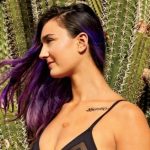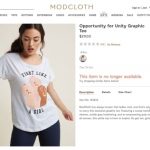What’s Driving The Billion-Dollar Natural Beauty Movement?
When Tata Harper’s stepfather was diagnosed with cancer, his doctors told him to remove all products containing synthetic materials, such as body washes and shampoos, from his home. In solidarity, Harper got rid of hers too. But she found the switch surprisingly difficult.
“I have always been a serious skin care customer, using the most effective, high-end, high-tech skin care available,” says Harper, who is originally from Colombia and studied industrial engineering in Mexico. “So when it came time to switch to natural skin care, I was really disappointed with the existing offerings. There wasn’t anything out there for women like me, who wanted serious skin care but didn’t want to use industrial chemicals on their skin.”
The most common chemicals in skin care products are parabens, synthetic colors, and phthalates. Harper spent the next few years researching alternatives with scientists in Europe who believed that effective, chemical-free skin care products were possible. In 2007, she founded Tata Harper, an all-natural luxury skin care line that uses multiple high-performance ingredients including Spanish lavender extract to help reduce wrinkle formation and retinoic acid from rosehip seed oil (instead of Retinol) to reduce the appearance of fine lines. Headquartered at Harper’s 1,200-acre farm in Vermont, the brand is now a best-seller at Sephora and hailed as a pioneer in the land-to-face movement. The famously chemical-averse Gwyneth Paltrow is among the company’s robust celebrity clientele.
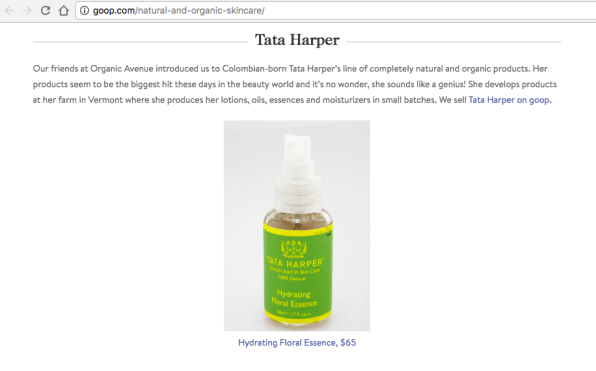
Tata Harper is just one of many success stories in the booming organic and natural beauty market, whose value is expected to reach $13.2 billion by 2018. Brands with a natural and/or botanically derived clinical orientation now represent the largest combined share of prestige skin care sales. Last year, they accounted for all gains in the category. “The space for cleaner, safer, better beauty has grown and is only continuing to grow,” says Gregg Renfrew, founder of Beautycounter, a cosmetics and skin care e-retailer that tries to educate consumers about the potential toxicity of some makeup. “In fact, natural and safer brands are outselling their traditional competitors by two to threefold.” Late last year, the research firm Kline & Company reached a similar conclusion, predicting that the synthetic cosmetics sector will decline in the next two years, while the natural skin care segment will grow. Already, the firm found, naturals have grown by 7% in the U.S., compared to a 2% rise in the overall beauty market in 2015.
And now that these products have become so mainstream, you don’t have to go rummaging through your local health food store to find your organic jasmine-infused eyeshadow. Sephora has sold botanical, chemical-free cosmetics for years and now offers a “Naturals” landing page showcasing hundreds of items. Nordstrom is opening dedicated natural beauty sections in 46 of its locations. Target announced plans to expands its natural beauty selection, thanks to a double-digit percentage lift in sales last year. And, reacting to customer feedback, CVS recently promised to remove chemical ingredients such as parabens and phthalates from approximately 600 of its in-house brands’ personal care products. Natural is available everywhere.
It all makes perfect sense to Harper. “People often think that natural means simple or untested, but natural ingredients are actually [some of] the most powerful ingredients in the world,” she says via email. “Synthetic ingredients are, in many cases, cheaper, more predictable versions of natural ingredients created in labs to simplify the manufacturing process.”
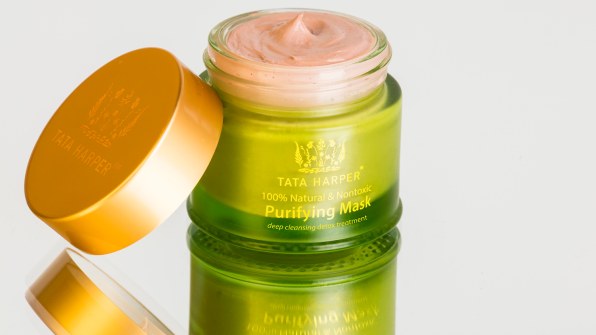
The Safer Ingredients Boom
The organic beauty boom is part of the larger shift in consumer awareness about health and wellness. Thanks to a growing number of beauty blogs and social media accounts dedicated to the benefits of going chemical-free, consumers have access to more information than ever before. Late last year, Dianne Feinstein, a Democratic senator from California, introduced the Personal Care Products Safety Act, a bill to strengthen regulation of ingredients in personal care products. “Our skin is our largest organ, and many ingredients contained in these products–whether it be lotion, shampoo, or deodorant–are quickly absorbed by the skin,” Feinstein said in her testimony to the Senate Health, Education, Labor and Pensions Committee. “There is increasing evidence that certain ingredients in personal care products are linked to a range of health concerns, ranging from reproductive issues, such as fertility problems and miscarriage, to cancer.”
Parabens and phthalates, for instance, have been found to be endocrine disruptors linked to increased risk of breast cancer. A recent study led by researchers at the University of California, Berkeley, revealed how a short break from certain shampoos and lotions made with chemical ingredients can result in a significant drop in levels of people’s hormone-disrupting chemicals.
Startling findings like these are what inspired Beautycounter’s Renfrew to start her own company. Launched in 2013, the California-based startup aims to increase awareness about the predominantly unregulated U.S. beauty market through blog and social media campaigns. Beautycounter’s own line of products range from makeup basics like lipstick and blush to sunscreen and body scrubs. Last March, Renfrew’s company raised a $13 million round from 33 undisclosed investors, bringing its total funds raised to nearly $42 million.
So what constitutes “clean beauty”? Is it organic? Paraben- and sulfate-free? Goop-endorsed? What does “all-natural” even mean? Renfrew points out that “natural” and “organic” have no legal definition in this category, and even a non-synthetic ingredient found in nature can be harmful. Lead, for example, should not exist in any beauty products.
“We focus on the safety profile of an ingredient, rather than the source,” Renfrew says. “In other words, just because something is naturally derived doesn’t mean it’s automatically safe.” To that end, Beautycounter developed a rigorous ingredient selection process, listing 1,500 questionable or harmful ingredients it vows never to include in its formulations. Roughly 1,400 of those chemical ingredients are already banned or restricted in personal care products by the European Union.
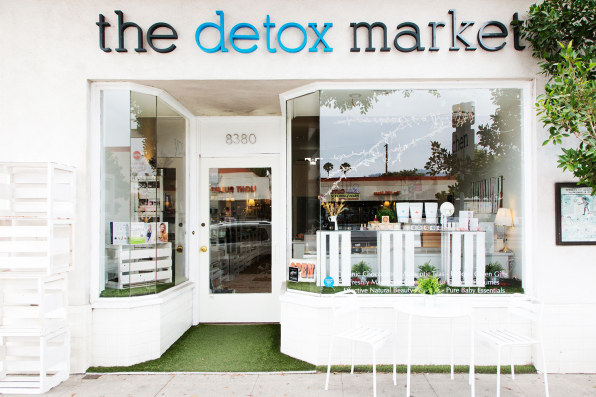
Educating consumers is a key piece of this movement, and one in which the e-commerce beauty site and subscription service Birchbox is heavily investing. The New York-based startup debuted an “Ingredient Conscious” shop category in 2014 as a way to differentiate between “natural” (i.e., using primarily ingredients found in nature) and “clean beauty” products (entirely free of parabens, phthalates, sulfates, and petrochemicals).
“We’ve noticed that our subscribers have a real desire to learn about ingredients,” says Jamie Johns, the senior merchant manager of Birchbox’s skin care division, via email. “Our approach at Birchbox is to demystify ingredients and provide an approachable way to try and learn about them.”
The company offers natural beauty products both online and in subscription boxes, with prices ranging from $7 to $105. Birchbox saw between 10%-50% growth in the overall category over the last year, driven by more customers trying and sticking with the natural brands.
“It’s definitely something that will become more mainstream,” says Artemis Patrick, Sephora’s SVP of merchandising. Sephora currently offers a wide range of natural products–coconut cleansing oil, kale and spinach age prevention cream, and oat milk dry shampoo among them–and is pursuing more brands to expand the category even further. One of its latest additions is the biotechnology-backed Biossance, a 100% plant-based skin care line that relies on squalane, a mega-moisture molecule that helps hydrate skin.
“Natural skin care is growing fast, almost eight times as much as compared to last year in terms of searches,” Patrick reports, adding that popular keywords include “organic,” “paraben-free,” and “vegan.” Sephora has also witnessed established brands like Estée Lauder go back and add natural ingredients or remove certain potentially harmful ones. “Big brands are becoming more conscious,” Patrick says.
Or at least keenly aware of what sells. Last year, after witnessing consumer interest in natural ingredients soar, Ulta, the largest beauty retailer in the U.S. with 950 stores, launched its own line of natural products that includes a top-selling lip oil infused with green tea and avocado extracts. According to Ulta SVP of merchandising Julie Tomasi, it’s good business: Ulta natural buyers spend 80% more in total beauty than the average customer. “We anticipate additional growth from this category,” she says.
Romain Gaillard has experienced the rise of organic beauty firsthand. The Detox Market, the green beauty e-commerce shop that he founded in 2010, didn’t take off until 2012, when a rush of new brands hit the scene and brought attention to the niche sector. Now his company has four brick-and-mortar retail locations and an online store that has been doubling in size for the last four years. In the coming year, Gaillard wants to open more shops, partner with restaurants and lifestyle brands, and launch an ambassador program.
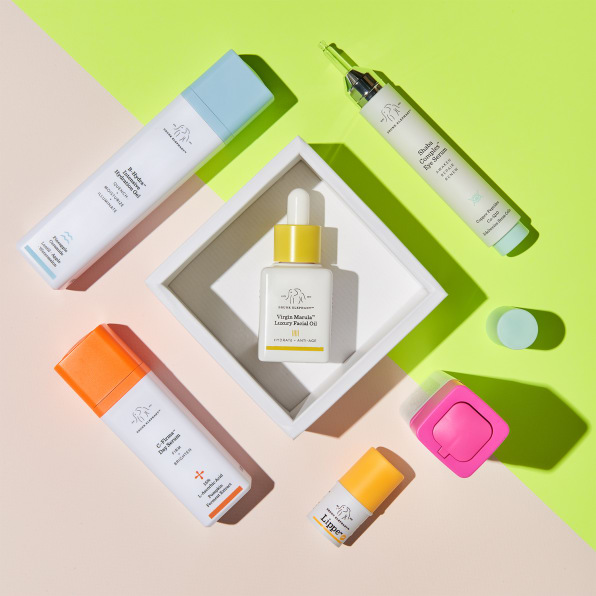
Gaillaird’s approach is to make natural cosmetics carefree and fun, versus focusing on why chemical alternatives are dangerous. Natural products, he is known to repeat to sell the concept, “feel better.”
Drunk Elephant founder Tiffany Masterson, meanwhile, wants to simplify what constitutes “clean.” Her company uses a mix of natural and “low-hazard” synthetic ingredients, and each product comes with a simply worded explanation of how and why ingredients were sourced. Customers, Masterson believes, are growing weary of healthy living buzzwords like “non-toxic” and “organic.”
“It is so overwhelming out there,” she says. “Consumers are fed up with marketing, gimmicky phrases that have been diluted over time. They want transparency. The future of skin care is going to be more straightforward.”
Is A Pricey Privilege Sustainable?
Going “clean” is costly. Sourcing fresh botanical ingredients, like exotic marula oil from overseas, does not come cheap. Organic farms tend to produce smaller batches because they don’t rely on growth hormones, so each ingredient is at a premium. Goods made without chemical preservatives also have a shorter shelf life. Tata Harper, for example, recommends using its products within six months. Compare that to conventional drugstore brands, which give a window of two to three years. The longer shelf life allows big box retailers to buy in bulk without worrying about expiration dates.
“Our ingredients are perishable and delicate, so our manufacturing processes are more like food production than an industrial factory,” Harper says. Synthetic ingredients can be made much faster and more cheaply than natural sourcing. “The fact that the industry has spent the last 20 to 30 years focused on synthetic ingredients also keeps their costs low, as large companies often use the most cost-effective ingredients available to be able to produce as much as possible,” she says.
But with naturals’ shorter shelf lives, how realistic is it that mass market companies will adopt them in greater numbers? Most consumers still rely on drugstore brands, such as Maybelline and Revlon, which keep their costs and ingredient prices low—sometimes one-third the price of premium organic brands. A Revlon lipstick sells for as little as $4.99, while an Honest Beauty alternative, an antioxidant blend of coconut oil, murumuru butter, and shea butter, goes for $18. A similar lipstick by Hemp Organics uses 95% certified organic ingredients and is priced at $15.80.
Karen Grant, global beauty industry analyst for the market research firm the NPD Group, isn’t sure the natural movement will catch on with the majority of Americans who don’t have the means to spend $40 on blush. Still, she isn’t ready to say it’s a passing fad. “It’s still early, still a bit niche,” she says. “But I don’t think this is something that will disappear. It’s a way of life.”
Grant identifies two demographics that make up the strongest part of the clean beauty base: younger millennials (18-25) who are concerned primarily with environmental impact (and are already familiar with the principles of natural ingredients, thanks to the ongoing Korean beauty phenomenon), and an older generation (40 and up) focused on health benefits.
Gaillard predicts this group of conscious consumers will remain faithful to the cause, like newly health-conscious eaters who never return to McDonald’s. “Once the curtain is pulled away and consumers know the truth, they won’t revert back to ‘unhealthy’ behavior,” he says.
Tata Harper agrees that consumers aren’t likely to revert to slathering unknown chemicals on their face. They want to know what’s in their moisturizer, just as they want to know what’s in their snack crackers.
“It’s a movement happening around the world,” Harper says. “A movement toward better health, an evolution in consumer products where we’re realizing that a lot of things we thought were good are not.”
A growing number of consumers are rejecting chemical-filled cosmetics for pricey, plant-based alternatives. It’s a thriving sector—one that some experts think could change the beauty industry for good.
When Tata Harper’s stepfather was diagnosed with cancer, his doctors told him to remove all products containing synthetic materials, such as body washes and shampoos, from his home. In solidarity, Harper got rid of hers too. But she found the switch surprisingly difficult.
Fast Company , Read Full Story
(45)



